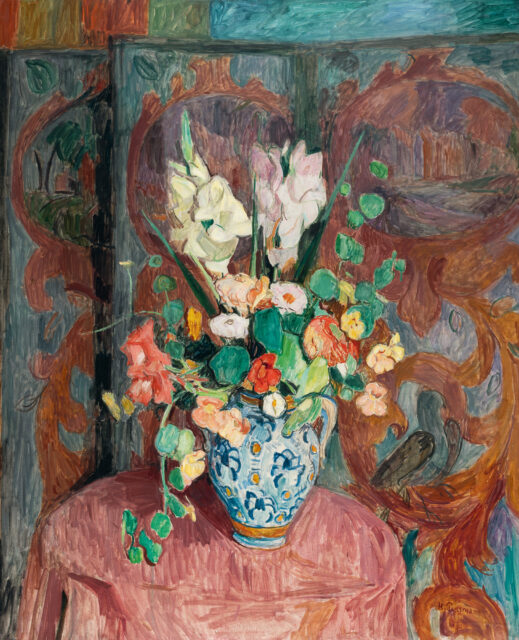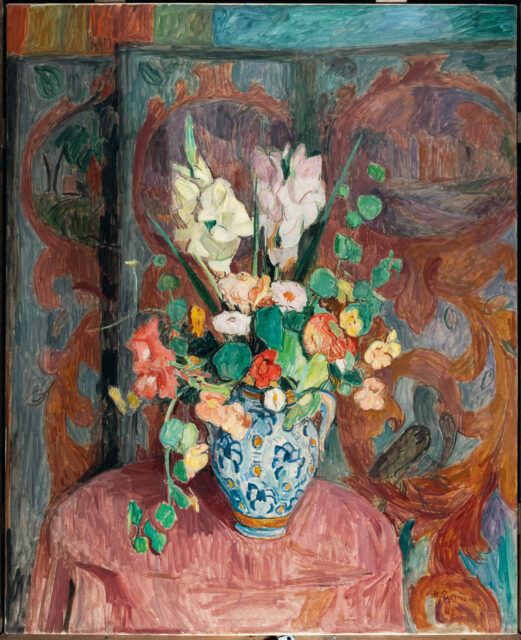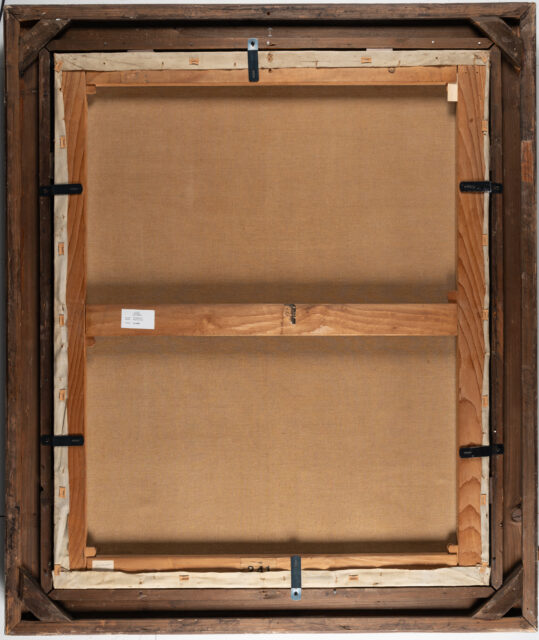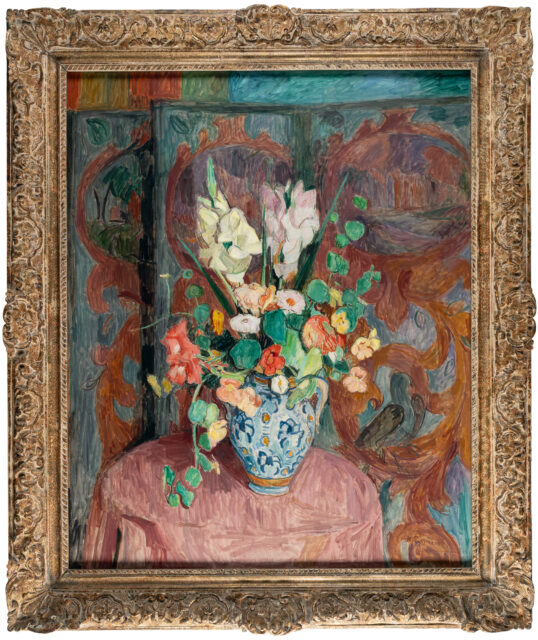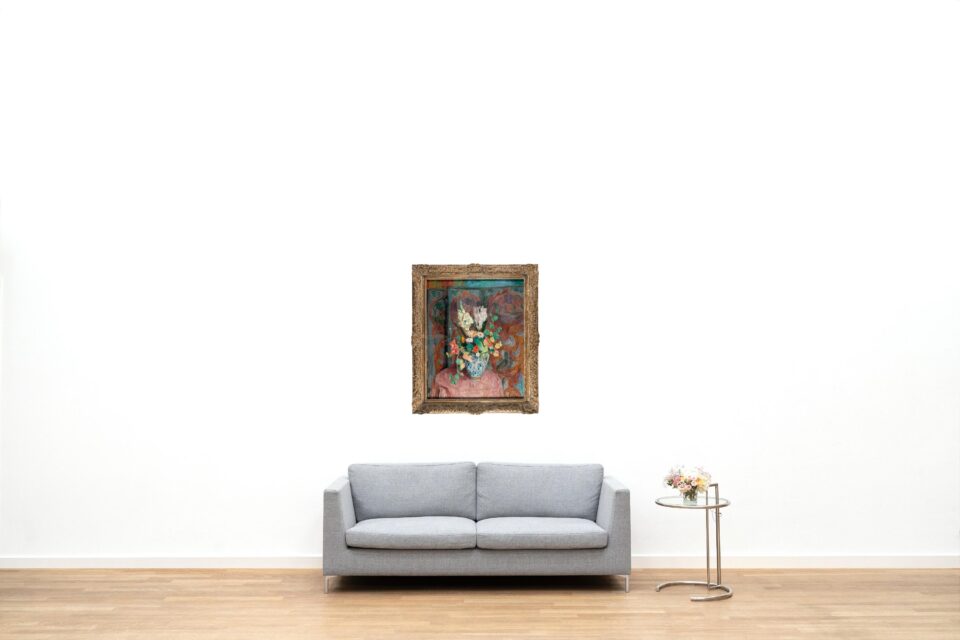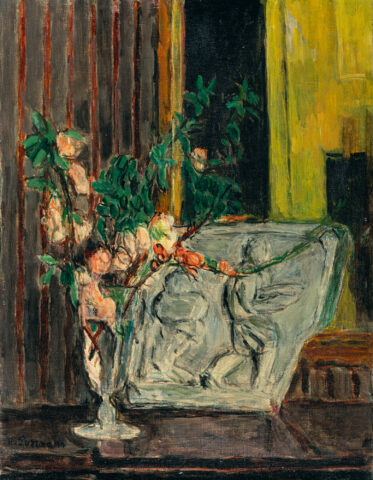
Still life with gladioli and nasturtiums
Details
Verso on the stretcher with customs stamps, a label remnant and a further label numbered “321”. Verso on the frame with various handwritten inscriptions, numbering and technical and dimensional details.
Lenz/Billeter 1926/12.
Provenance:
Kunsthandel Lucas Lichtenhan, Basel, inscribed by hand on the reverse of the frame;
Ottilie Voigt, Romanshorn, probably acquired from the aforementioned;
Privately owned, Karlsruhe, received by inheritance;
Privately owned, Hamburg, passed on in the family to the present owners;
Private property, Baden-Württemberg.
Description
– Great colourist of modernism
– Through the modulation of the colours, starting from the four tones of blue-orange, red-green, Purrmann achieves an exciting unity
– Purrmann’s passion for collecting rare objects is also evident in this work
Hans Purrmann was born as the son of a painter and plasterer in Speyer in 1880 and, after early stages at the Karlsruhe School of Arts and Crafts and at the Academy in Munich under Franz von Stuck and at the Académie Matisse in Paris, found his very own artistic style, which shows his preference for light-flooded interiors, Mediterranean landscapes and still lifes. Although his painting reveals clear influences from the French artists Matisse, Cézanne and Renoir, Purrmann found his very own style of painting, which impressively combines form and colour.
According to Robert Purrmann, the artist’s son, the undated, large-format “Still Life with Gladioli and Nasturtium” was created in 1926 in Langenargen on Lake Constance. Purrmann spent the summers there with his family after purchasing a fisherman’s house directly on the lake in 1919.
Purrmann’s passion for collecting paintings, prints, carpets, antiques and special objects comes to the fore in the present painting. The magnificent majolica vase filled with gladioli, zinnias and nasturtiums with floral decoration, which stands in the centre of the picture on a small round table with a tablecloth, can be found in several of the artist’s still lifes. Purrmann’s collector’s items repeatedly find their way into his works. Purrmann captures both the vase and the flowers in fine, precise brushstrokes in bright shades of yellow, red, green and blue, clearly emphasising their significance against the otherwise more tonal colours. Purrmann’s love of fabrics, which he shared with his friend and teacher Matisse, plays an important role in the background of the painting. The colourful ornamental screen can also be found in other works by Purrmann and appears in interior scenes from his studio in Langenargen from around 1920. Purrmann incorporates the colourful, somewhat muted screen completely into the depiction. The picture planes almost seem to blend together. The viewer has the feeling that the depictions on the screen merge with the flowers and the vase with the handle. The parrot depicted on the right-hand edge of the screen seems almost real. Despite this perceived connection between the objects depicted, their intrinsic value is retained. Purrmann brings the still life to full effect and development through the abundance and opulence of the depiction. An impressive example of his love for this subject.
In 1995, on the occasion of the exhibition ‘Hans Purrmann. Im Licht der Farbe’ (In the Light of Colour) on his still lifes: “Through the modulation of the colours, starting from the four-tone harmony of blue-orange, red-green, Purrmann achieves an exciting unity that can be underlined with the words of Matisse: You have to have a large and clear disposition in order to be able to set three or four contrasts correctly; the further meaning of the colour takes place between these. Painting is nothing but the observation of colour relationships to one another; one must see in the ensemble (…)”.
* All results incl. buyer’s premium (27%) without VAT. No guarantee, subject to error.
** All post-auction prices excl. buyer's premium and VAT. No guarantee, subject to error.
*** Conditional Sale: The bid was accepted below the limit. Acquisition of the work may still be possible in our post-auction sale.
R = regular taxation
N = differential taxation on works of art which originate from a country outside of the EU
The private or commercial use of images shown on this Website, in particular through duplication or dissemination, is not permitted. All rights reserved.


